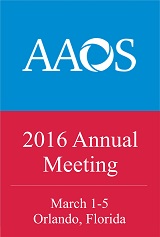
AAOS 2016: Articulating vs. Static spacers for periprosthetic hip infection
CONFERENCE ACE REPORTS
This ACE Report is a summary of a conference presentation or abstract. The information provided has limited the ability to provide an accurate assessment of the risk of bias or the overall quality. Please interpret the results with caution as trials may be in progress and select results may have been presented.
Synopsis
36 patients with periprosthetic joint infection following a primary total hip arthroplasty were randomized to undergo a two-stage exchange with either an articulating or static interim antibiotic spacer. The purpose of the study was to compare these two spacers in terms of operative time, blood loss, blood transfusion requirements, and the length of hospital stay. During the first and second stage...
To view the full content, login to your account,
or start your 30-day FREE Trial today.
FREE TRIAL
LOGIN
Forgot Password?
Explore some of our unlocked ACE Reports below!

Learn about our AI Driven
High Impact Search Feature
Our AI driven High Impact metric calculates the impact an article will have by considering both the publishing journal and the content of the article itself. Built using the latest advances in natural language processing, OE High Impact predicts an article’s future number of citations better than impact factor alone.
Continue



 LOGIN
LOGIN

Join the Conversation
Please Login or Join to leave comments.